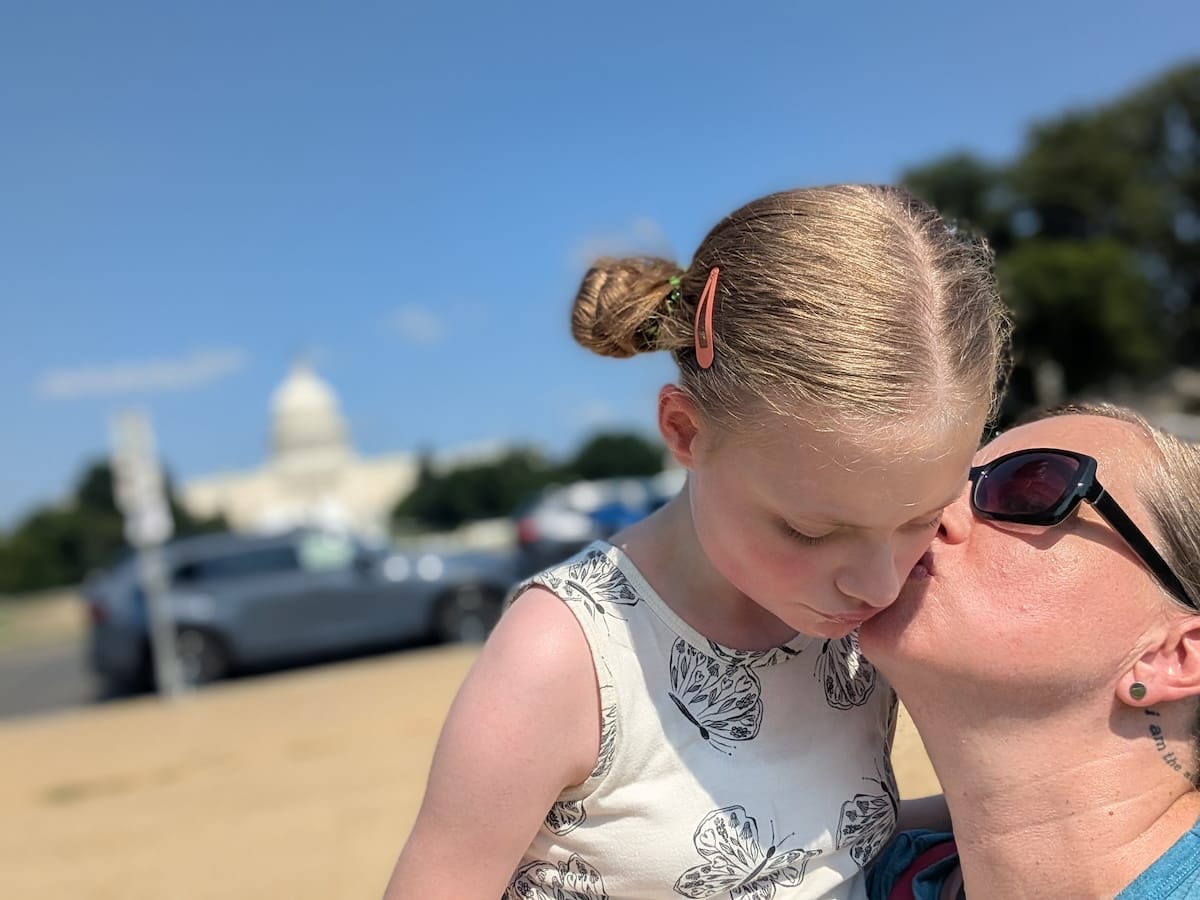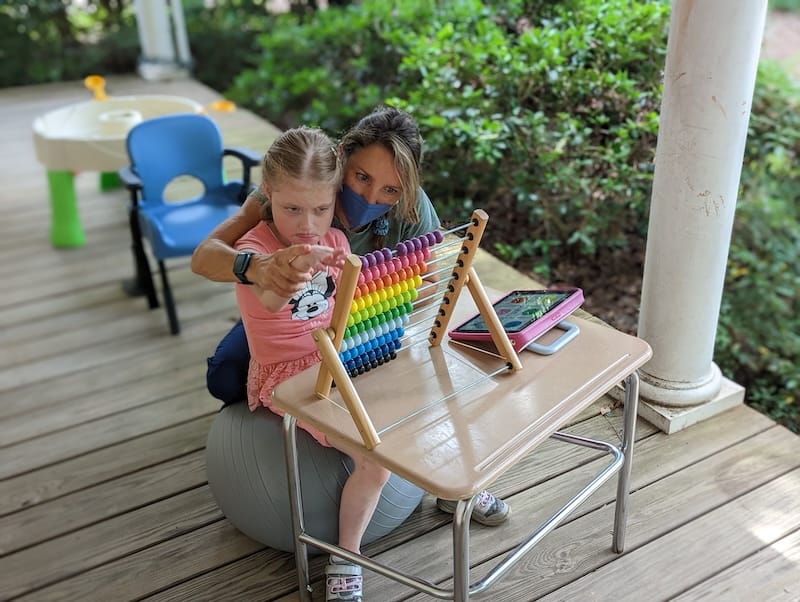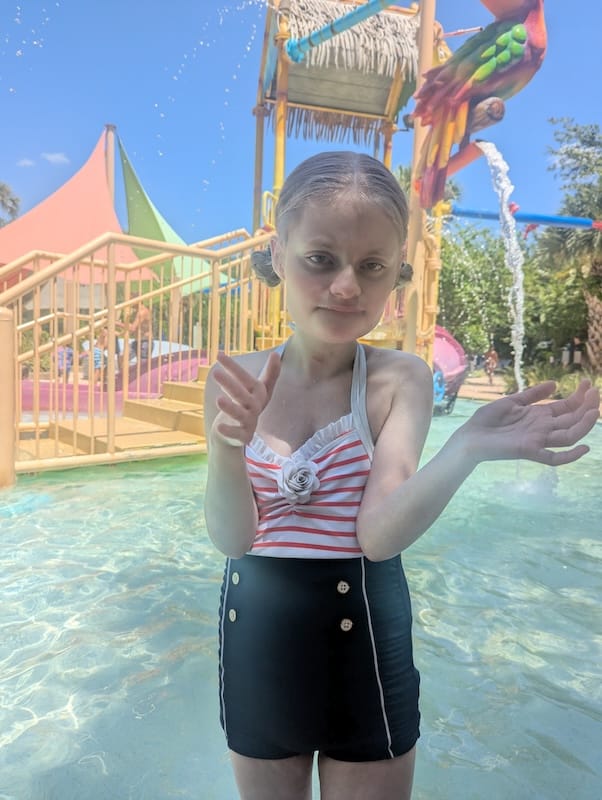Emma's Story: Come See a Day in My Daughter's Life
Emma and her sister were born at just 27 weeks. Home and community-based services keeps Emma here with her family, where she belongs.

by Stacy Staggs
My name is Stacy Staggs. I live in North Carolina with my husband Shane and our amazing twinnadoes, Emma and Sara, who’ve been making our house loud and chaotic for 11 years! Our daughters were so ready to start making good trouble that they only waited 27 weeks before entering the world.
Emma and Sara love music. When I say our house is LOUD I’m not kidding! Sara’s started playing acoustic guitar with her dad and grandfather. She’s also picked up keyboards and percussion. The corner of our living room is basically a conservatory filled with instruments and sheet music. Emma really enjoys my off-key lullabies and has very discerning taste in movies and television: Sesame Street and Barney and Friends, but she’s also obsessed with the original Winnie the Pooh movie from the 1970s. Don’t try to sneak more recent adaptations by her! She’s so active, curious, and adventurous that she can be tough to contain.
As micropreemies born after I was diagnosed with life-threatening pre-eclampsia and HELLP syndrome, Emma and Sara clocked long months in the NICU before we were able to bring them home. Emma was just one pound, nine ounces, and Sara weighed two pounds. No one could have planned for this. I went from a healthy pregnancy with great prenatal care to a crash c-section with a snap of a doctor’s fingers.

Emma spent 110 days in the NICU. She ended up with a feeding tube and tracheostomy, and she needed laser surgery at two months to save her sight. When we took her home, her nursery was filled with butterflies, flowers, and hospital-grade equipment. She needed 24/7 “eyes on/proximate” nursing care. She still needs that care. If a nurse isn’t in the house, Shane or I are with her. We have to monitor her airway constantly. Even in the NICU, she was showing us her feistiness by repeatedly yanking her breathing tube. Because her vocal cords are paralyzed she doesn’t have a way to call for help if she stops breathing or starts choking, so we need eyes on her at all times to watch for signs of distress. We made it through ten and a half years with that hypervigilance and we're still sorting through its ongoing effects.
Thanks to reconstructive surgery in 2022 (originally planned for May 2020), Emma is able to breathe through her nose and mouth instead of a trach now, but she still needs a feeding tube for all of her nutrition, hydration and medication. She uses highly specialized formula that costs around $3,000 a month, and it’s the only formula her body will tolerate. Only Medicaid covers the cost of that formula, not our primary insurance. If she lost her Medicaid, it would basically start a ticking clock, because once she runs out, we'll lose her. We would be forced to surrender her to the hospital to become a ward of the state because we can’t care for her.

Emma gets an incredible amount of support through Medicaid. She’s able to grow and thrive because of nursing care, occupational therapy, physical therapy, supplies for her tube feeding, medical equipment, and all her other needs. Babies like her didn't leave the hospital before, and those that did would have gone into institutions at a cost 3-5 times higher than at home. I'm what the state of North Carolina calls an “unpaid caregiver to a child at risk for institutionalized care.” Because Emma is in the community, she has a hard-fought civil right to receive public education services with expert and dedicated, though overworked and under-resourced, educators and therapists, also in our home.
When I hear about proposed cuts to Medicaid, that’s when the intrusive thoughts start. How are we going to survive this? When will our legislators and our country come to their senses? All the statistics and dollar amounts are flying around, but what they’re talking about is my daughter’s life. She will literally be unable to eat without Medicaid. Very few kids need the level of care Emma requires, and it’s so critical for them. The registry of unmet needs for Medicaid applicants is so long that people are dying before their coverage kicks in or they’re able to access services, despite being deemed eligible. We’re so scared that Emma would be first in line for cuts because her care is so multi-faceted.
I would love to invite you into our home to spend a day with us. Get to know Emma and Sara, our nurses, and their educators, and see what a day in the life is like — from the highs of cooking dinner while everyone’s playing music in the living room to the lows of spending hours on the phone untangling a coverage issue with Emma’s Medicaid. I would love to give you insight about how much Medicaid means to our family, and I think you’ll come away with a deeper understanding of what it means to have, and love, and care for, a medically complex child.

